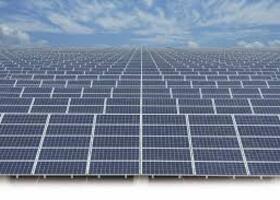A solar power system, also known as a photovoltaic system, is a type of renewable energy system that converts sunlight into electricity. This system can be used to power homes, businesses, and even entire communities.
Solar Power System
System has the ability to convert the light of the sun into electricity. The output of the system is DC power.
The system is reliable, safe, clean, very effective and available.
There are two system types: ON-GRID and OFF-GRID.
ON-GRID system is the system which actually connected to Grid. OFF-GRID system or stand alone is the system that apart from the grid.
solar power system components
There are four main components of a solar power system:
Solar Panels: Solar panels, also known as photovoltaic (PV) modules, are made up of solar cells that capture sunlight and convert it into direct current (DC) electricity. The number and size of solar panels needed will depend on the electricity demand of the location where the system will be installed.
Inverter: The inverter is an essential component that converts the DC electricity produced by the solar panels into alternating current (AC) electricity, which is the type of electricity that is used by most electrical appliances and devices.
Batteries: Some solar power systems may also include batteries to store excess electricity produced during the day for use at night when there is no sunlight. This can help make the system more reliable and independent of the electric grid.
Mounting and Wiring: Mounting hardware is used to securely install the solar panels on a roof or on the ground. Wiring connects the various components of the solar power system together and carries the electricity produced by the solar panels to the inverter and on to the electrical load or the battery bank.
The cost of a solar power system can vary depending on the size, location, and installation requirements. The cost of solar panels has decreased significantly in recent years, making solar power more affordable for homeowners and businesses. The cost can be broken down into three main categories:
The Components Of The System
PV MODULES – The part that convert the light in the DC power
INVERTER – The part that convert the DC power to AC power
STRUCTURE – The part that holds the solar panels
CABLES – Responsible for the transfer of electricity. There are DC cables and AC cables.
BREAKERS – For safety conditions. There are MCB, MCCB, and RCCB.
EARTH SYSTEM – To protect all system components.
Power and Units
The power is the ability or capacity to do something or act in particular way.
Electrical Power : the rate per unit time at which Electrical energy is transferred by an electric circuit.
The SI unit of power is the Watt
One Watt is defined as the current flow of one Ampere with voltage of one Volt.
Current : is a flow of electric charge. In electric circuits this charge is often carried by moving electrons in a wire.
Voltage : is the pressure from an electrical circuit’s power source that pushes charged electrons(current) through a conducting loop.
In the solar power system we use KWH as a unit of measurement, 1 kwh = 1000 Watt produced in 1 h.
Current- Voltage Curve

Isc= Short circuit current(max current when no resistance in the loop)
Imp= (max point of current that we can get)
Voc= Open Circuit Voltage (max Volt when no load)
Vmp= (maximum point of Volt that we can get)
P=Current*Volt
In both cases power =0 Watt because Isc with o Volt on the axis Voc with o current on the axis.
Pmax=Imp*Vmp(17+2,5)
solar power system cost
The cost of a solar power system can vary depending on the size, location, and installation requirements. The cost of solar panels has decreased significantly in recent years, making solar power more affordable for homeowners and businesses. The cost can be broken down into three main categories:
Equipment costs: This includes the cost of the solar panels, inverter, and other components like mounting hardware and wiring.
Installation costs: This includes the cost of labor, permits, and other fees associated with installing the system.
Maintenance costs: Solar power systems generally require very little maintenance, but there may be some costs associated with cleaning and repairing the system over time.
The cost of a solar power system can also be affected by government incentives, such as tax credits or rebates, which can help reduce the overall cost. The cost of a typical residential solar power system in the United States ranges from $10,000 to $30,000, depending on the size and location of the system.
